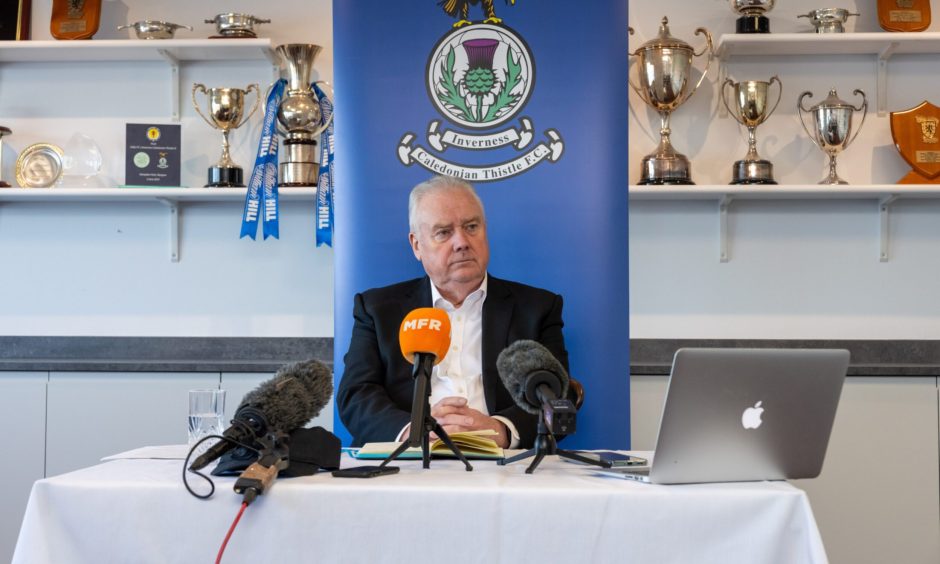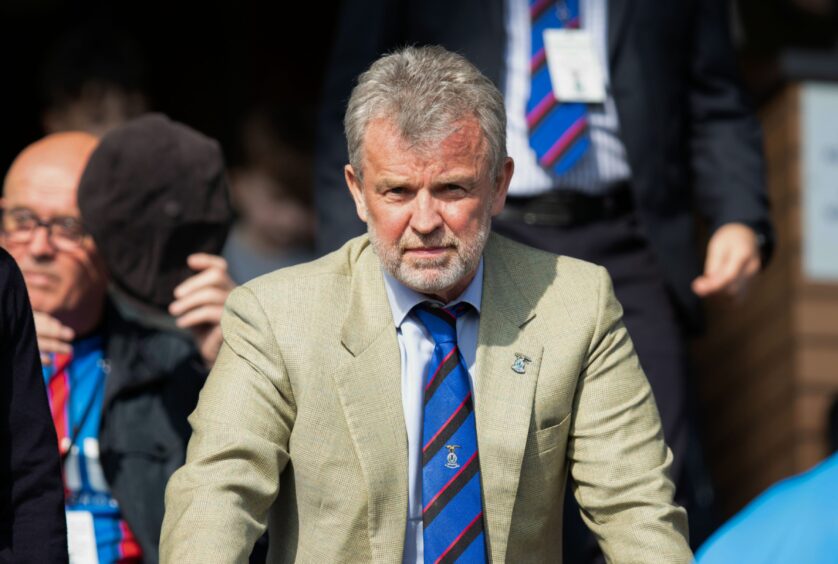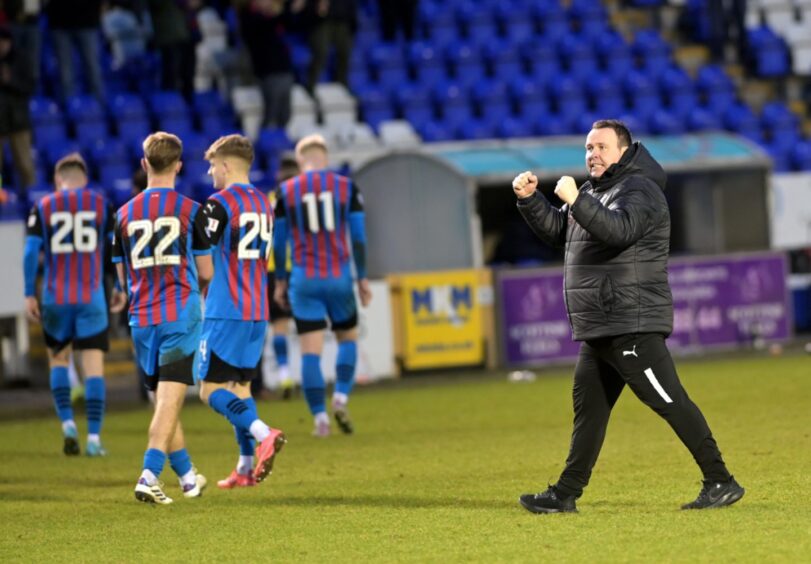It’s been an emotional rollercoaster of a week for Caley Thistle fans.
Monday’s announcement that no bids for the stricken club had been made before the March 6 deadline had many fearing that liquidation was on the cards.
Two days later and a “transformational” meeting between creditors changed the picture drastically, with a lot more optimism surrounding the club’s chances of survival.
The average fan is having to become familiar with the sort of legal and business jargon that many wouldn’t ordinarily encounter.
It’s been a confusing period for Inverness football supporters.
To help break down what we’re seeing, we spoke to to Alisdair MacPherson, co-director of the Centre for Scots Law and a senior lecturer in commercial law at the University of Aberdeen.
What are the purposes of administration and where are we in the process?
Administration is a word that sends a shiver up the spines of many Scottish football fans.
We’ve seen some clubs fall into huge financial difficulty, regroup and get back to where they were.
But others have ended up liquidated – and some of those have disappeared from our national game altogether.
It’s often seen as a club’s last resort when financial distress reaches a critical point.
But its purpose is clear: to rescue the company as a going concern.
A going concern is a term that means a business has enough resources to stay afloat for the foreseeable future.
“There’s basically a hierarchy of purposes for administration,” Alisdair said. “At the top, it’s rescuing the company as a going concern – and that still remains the case as it stands for Caley Thistle.
“If they reach the conclusion that that’s not possible they move into the next purpose of that hierarchy. That’s to achieve a better result for the company’s creditors than would be likely if the company were wound up.
“That would be them thinking about selling off assets, distributing monies to the creditors in accordance with their ranking order.
‘Rescuing the club is still the focus’
“If it’s not possible to achieve a better result for a company’s creditors then we move into the lowest purpose of the hierarchy.
“That’s realising assets, so selling them off, and basically giving out proceeds to one or more secured or preferential creditors.
“But as things stand, we’re still in that higher purpose in the hierarchy. So rescuing the company, that’s the focus.”
Creditors are the people or businesses that the company owes money to.
You have secured creditors – someone who holds a legal claim over specific assets – at the top. Then comes preferential creditors, which may be groups like employees due unpaid wages or HMRC for unpaid taxes.
Below that is unsecured creditors, who will receive money should it be available once secured creditors are paid.
What is a CVA and how can Caley Thistle move out of trouble?
There’s been a lot of talk of potential new owners and the hope that someone can step in and save the day.
But the numerous expressions of interest in buying the club have so far come to nothing.
The joint administrators outlined three key reasons for that on Monday.
They stated that any transaction would require the use of a company voluntary arrangement (CVA).
But there is a serious risk of that being vetoed by creditors.
But what is it and why is it important?
Alisdair said: “The intention here is to move into a CVA. If you think about the spectrum of insolvency processes, you’ve got administration in the middle where you’re focused on rescue.
“At the negative end is liquidation, ultimately ending in dissolution of the company.
“On the more positive side, you’ve got a CVA, what’s referred to as a composition in satisfaction of a company’s debts.
“And by composition, that could include reducing the debts that are owed to certain creditors.
“You could be paying a lesser amount, a lower percentage, or extending the payment terms to make it more affordable in the longer term.”
What’s needed to secure a CVA?
Thrashing out those terms has been a big part of the process thus far.
So how do we get there?
“What you need in order to get a CVA is votes,” Alisdair added.
“You need the shareholders to approve and you need approval from the creditors.
“It requires 75% in value of the creditors and there’s also a separate threshold for unconnected creditors.
“But you also have to think about the priority of different types of creditors. If you have secured or preferential creditors, as Caley Thistle seem to do, they would have to agree, if their rights are to be affected.”
A bleak outlook or is there reason for Caley Thistle fans to be optimistic?
In that context, Wednesday’s announcement that several of the main creditors had a productive meeting at the Caledonian Stadium seems to be a major step forward.
Just two days earlier, things were looking altogether bleak.
Fans were readying themselves for a long journey rebuilding a new club from the depths of the North Caledonian League, facing the prospect of an away trip to Bonar Bridge and an Inverness derby against Clach’s reserves.
How does Alisdair feel about the club’s outlook after such a turbulent period?
He said: “This is very much a lawyer’s answer but without having all of the information that’s available to the joint administrators, it’s difficult to say what the most likely outcome is.
“But certainly, what has been said recently is a real concern. It’s not completely hopeless though, they still seem to be on that first purpose on the hierarchy of administration: to rescue the company as a going concern.
“Obviously though, time is ticking on. Being in a position where they’re a credible going concern in the run-up to next season, where they can foreseeably pay creditors and there’s investment on the horizon is vital.”
For more Inverness news and updates visit our dedicated page and join our local Facebook group.




Conversation